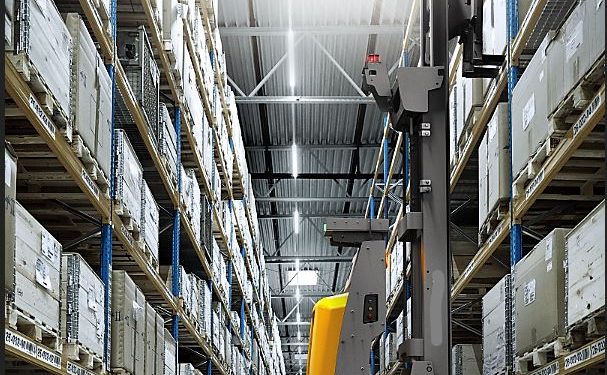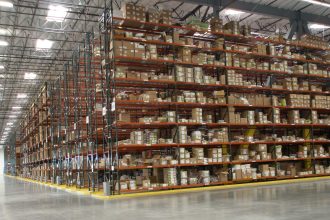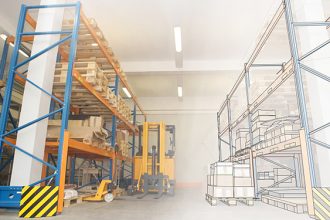Adjusting Aisle Width for VNA Trucks

Before closing up your aisle space, have a plan for getting it right.
Space is getting tight in your facility, so you’ve opted to add some tighter and higher racking to the mix. Complementing that might be the addition of some very narrow aisle (VNA) lift trucks. A great solution for utilizing your cube, building up as well as “in,” by closing up your aisle space will optimize your storage options. When dealing with VNAs in your facility, you’ll need to make some aisle adjustments and do it safely. Working as a team, your truck manufacturer, dealer/distributor and company engineer will define the perfect layout for your processes.
Tightening up your aisles typically means going from a standard aisle width of about 10.5 feet and shrinking it down to something closer to five to seven feet. This isn’t a good fit for a more traditional, counterbalanced lift truck. Fitting into that space would be tight to begin with, but then having to turn in that space would become impossible. Hitting and damaging racks would be a likely outcome, which is where bringing in VNAs becomes important.
Using VNAs will mean adding in guidance to your aisles, which allows the driver to avoid the need for steering, ensuring run ins with the trucks and racks can be avoided. There are two types of guidance to choose from: wire or rails. In the United States, about 95 percent of aisle guidance falls into the wire category, mostly due to its affordability.
Your lift truck partner will work with you to embed the wires at the exact mid-point between racks, just beneath the warehouse floor’s surface. The trucks have two wire guided antennas that move the truck down the aisles. Because the steering is disabled, the driver is able to concentrate on moving forward and back, and lifting and lowering the mast.
When designing your new racking configuration to very narrow aisle, remember that you’ll need to different between your rack-to-rack dimensions and your pallet-to-pallet dimensions. Typically the pallets will be deeper and you will have some overhang—before adding in the VNAs, make sure there is enough aisle clearance to manage it.
Along with your new racking configurations, you might want to add in pick-up and deposit (P & B) stations. Here, employees can stage pallets and products ready for storage, as well as items coming off the racks ready for movement to shipping. Different types of trucks will transport the pallets and cartons to/from the racks to the stations. These stations help keep the VNAs within the aisles themselves at all times. In most cases, you’ll want to place P & B stations at the end of every other double row pallet rack.


